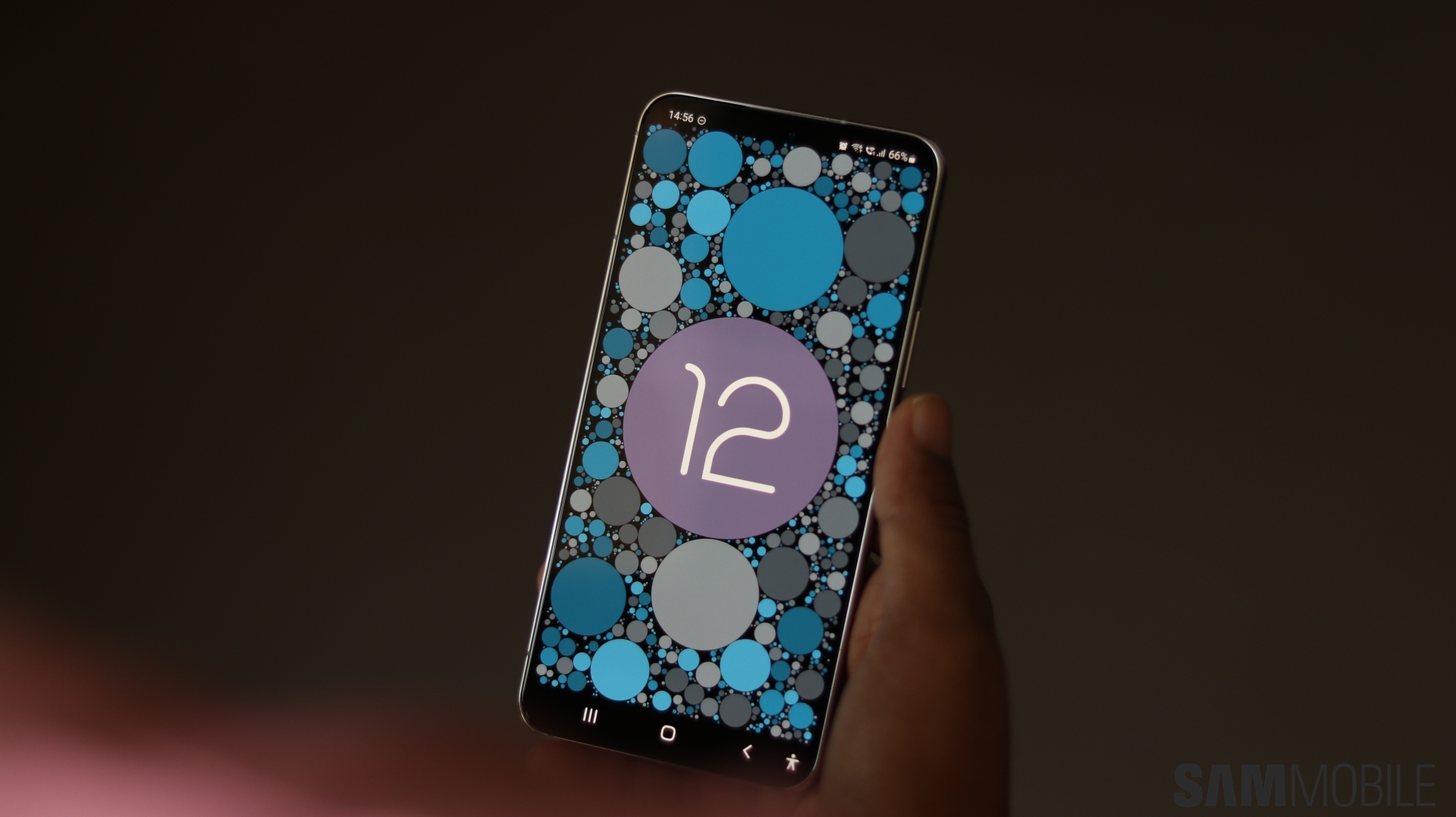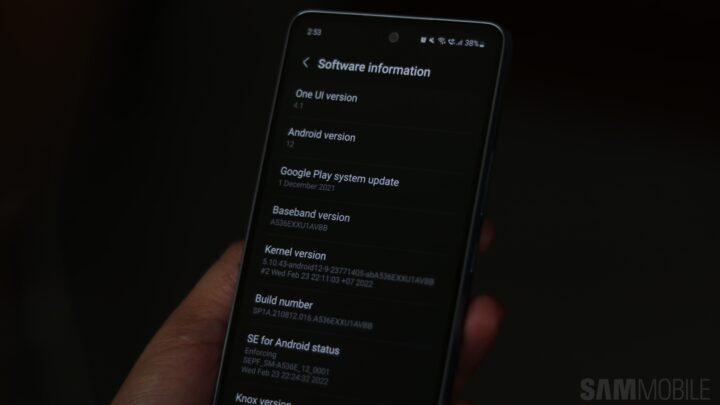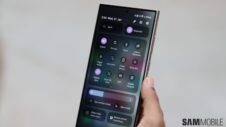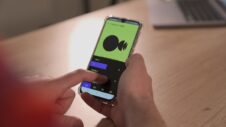Samsung is the best brand for customers who care about firmware updates. For several reasons. One is that Galaxy smartphones receive more Android OS upgrades than any other brand, including Google Pixel. The other is that Samsung is usually the first OEM to release new security patches, even ahead of Google.
Samsung also provides the ODIN tool for Android smartphone users who prefer manual updates. And as many of you who check our home page regularly know, official Samsung firmware files for ODIN are available for download on our website. We cover software update stories and discuss the latest firmware versions regularly.
Right now, however, we're doing something different. We're explaining what the letters and numbers associated with every firmware version mean. Once you learn this information, Samsung's firmware versions will no longer look like strings of seemingly random letters and numbers. Instead, you'll be able to read the hidden meaning behind the apparent randomness and gain all the information you need at a glance.
Learn to read Samsung firmware numbers the easy way
Each character or combination of characters contains specific bits of information about the firmware and the target device. The easiest way to understand Samsung's firmware number scheme is to break it down into four pieces.
We'll use the most recent Galaxy Note 10+ (LTE) update for reference. It carries firmware number N975FXXU8HVE6. We'll break it down as follows: N975 | FXX | U8H | VE6.
There are different ways to cut Samsung’s firmware numbers into different sections. We chose this method because it’s easier to remember, i.e., there are four sections containing 4-3-3-3 characters. N975 | FXX | U8H | VE6.
Furthermore, each section is defined by the type of information it pertains to, including hardware (N975), availability (FXX), the contents of the update (U8H), and when it was built (VE6).
NOTE: The 4-3-3-3 pattern works with Samsung firmware updates in most markets, except, for example, in the United States, where unlocked Galaxy devices have an additional character in their firmware numbers.
Remember that we're using the recent firmware number from the Galaxy Note 10+ as a reference. This firmware identifier will vary based on each Galaxy device and update available.
Samsung firmware number section 1 — N975 — device information
- N: The first character shows the Galaxy series. “N” is for the now-canceled Galaxy Note series, “S” is for the Galaxy S series (although it used to be “G” before the Galaxy S22 came along), “F” is for foldable devices, “E” stands for the Galaxy F family, and “A” is for the Galaxy A lineup, etc.
- 9: The second letter in the firmware number loosely represents the price point of your Galaxy device within the confines of its lineup. “9” is for top-tier phones such as the Galaxy Note 10+ and Galaxy S22. It's shared across generations and models. For example, every firmware version for every Galaxy Fold released to date starts with the characters “F9.” A cheaper device from the same year as the Galaxy Note 10+, i.e., the Galaxy Note 10 Lite, has model number (SM)-N770F. “N7” labels this phone as a Note (N) device that's not necessarily cheap (7) but doesn't cost as much as a flagship (9).
- 7: The third character reveals the generation of the Galaxy device meant to receive the update. The Galaxy Note 10+ was the 7th generation Galaxy Note (from the moment Samsung started counting using the current method). The meaning of this character is loosely applied across different Galaxy lineups. For example, the Galaxy S21 was the 9th generation, and the Galaxy S22 series had to jump to a “0.” The Galaxy A53 (SM-A536) is considered the third generation in its series, ever since Samsung changed the naming scheme from “Galaxy A5” to “Galaxy A5x.”
- 5: The fourth and last digit in section 1 has different meanings for different Galaxy lineups. For flagships, it usually means that the higher the number, the larger the display. The Galaxy S22, S22+, and S22 Ultra have “1,” “6,” and “8” as their fourth character in their firmware versions/device numbers. This character also shows whether the phone caps out at 4G LTE or has 5G capabilities. “0” and “5” are reserved for LTE devices, while 5G Galaxy phones can use characters such as “1,” “6,” and “8.”
Samsung firmware number section 2 — FXX — market availability
- F: The first character in the second section corresponds to the market region where the Galaxy device and its firmware update are available. Sometimes this letter changes based on whether or not the device is 5G capable. “F” and “B” denote international LTE and 5G models, respectively. “E” corresponds with Asian markets, although “N” is reserved for South Korea. “U” is for the USA, but unlocked Galaxy devices in the United States get an extra character: “U1.” Variations like “FN” and “FG” also exist in a few markets.
- XX: These two grouped characters contain additional information about the specific variant of your device in your market. “XX” is associated with international and European markets. USA devices carry “SQ,” but USA-unlocked devices have the letters “UE.” You can always check which firmware version your Galaxy device has by opening the Settings app, then tapping “About phone” and “Software information.”
NOTE: It's important to keep in mind that the first two sections in the firmware number of your Samsung Galaxy device will never change, no matter how many updates you install. The rule is that when you install firmware updates manually, you should never try to apply updates whose first seven characters in the firmware number don't match your current version. (First eight characters for USA unlocked and a few other variations like FG, FN).
Samsung firmware number section 3 — U8H — the contents of the update
- U: This character is always either an “S” or a “U,” no matter which Samsung Galaxy phone or tablet you're using and where. It tells whether the current firmware update contains only a security patch “S” or if it brings additional features “U”. The latter means that the firmware update should add features or upgrades to primary apps, the UI, background systems, etc.
- 8: This is the bootloader number. A bootloader is a crucial bit of software that tells your Galaxy phone what programs to load at startup. It's analogous to the BIOS in Windows PCs. When it comes to this number, it's important to remember that you can never roll back to a firmware update that has a bootloader version lower than your current one. In other words, the “8” in the Galaxy Note 10+ firmware means this is bootloader version 8, and users cannot roll back to an update featuring bootloader version 7 or lower.
- H: This is another important yet seemingly random character in Samsung's firmware scheme. It reveals how many major One UI and feature updates the device has received. Every new Galaxy device starts with an “A,” and this letter goes up one notch in the alphabet with every significant update or new version of One UI it picks up along the way. The Galaxy Note 10+ shipped with One UI 1.5 (A). It now runs One UI 4.1, and its firmware version carries the letter “H,” which means it received seven significant, feature-rich updates.
Samsung firmware number section 4 — VE6 — the update's build history
- V: The third-last character in Samsung's firmware number represents the year when the update got built. In Samsung's firmware number language, “V” is the year 2022. “U” was 2021, and presumably, 2023 will be “W.” Sometimes, this letter can indicate which Android OS version a Galaxy device is running (or receiving via update), but only for newer phones. This character simply represents the year when the update got built, and it often, although not always, coincides with the latest version of Android OS available that year.
- E: Similarly, the second-last character coincides with the month when the firmware was complete. “A” is for January, which means that the letter “E” in our example represents May. Once again, there's always a chance that an update finalized one month goes live the next. Furthermore, this letter doesn't always match the security patch for the month it represents. An update built in May can go live in June and contain an earlier security patch.
- 6: And the very-last character in Samsung's firmware number is a build identifier. This character is often represented through a number and sometimes through a letter. Every new update starts at build identifier “1” or “A.” This character goes up a notch with every new build and resets to “1” or “A” with every new substantial firmware update released. However, a firmware update with build identifier “8” doesn't necessarily mean it's the 8th build released in a month. Some builds can enter development but might never get released. Their brief existence is often reflected in the build identifier of the next update that reaches the public.
Join SamMobile’s Telegram group and subscribe to our YouTube channel to get instant news updates and in-depth reviews of Samsung devices. You can also subscribe to get updates from us on Google News and follow us on Twitter.







